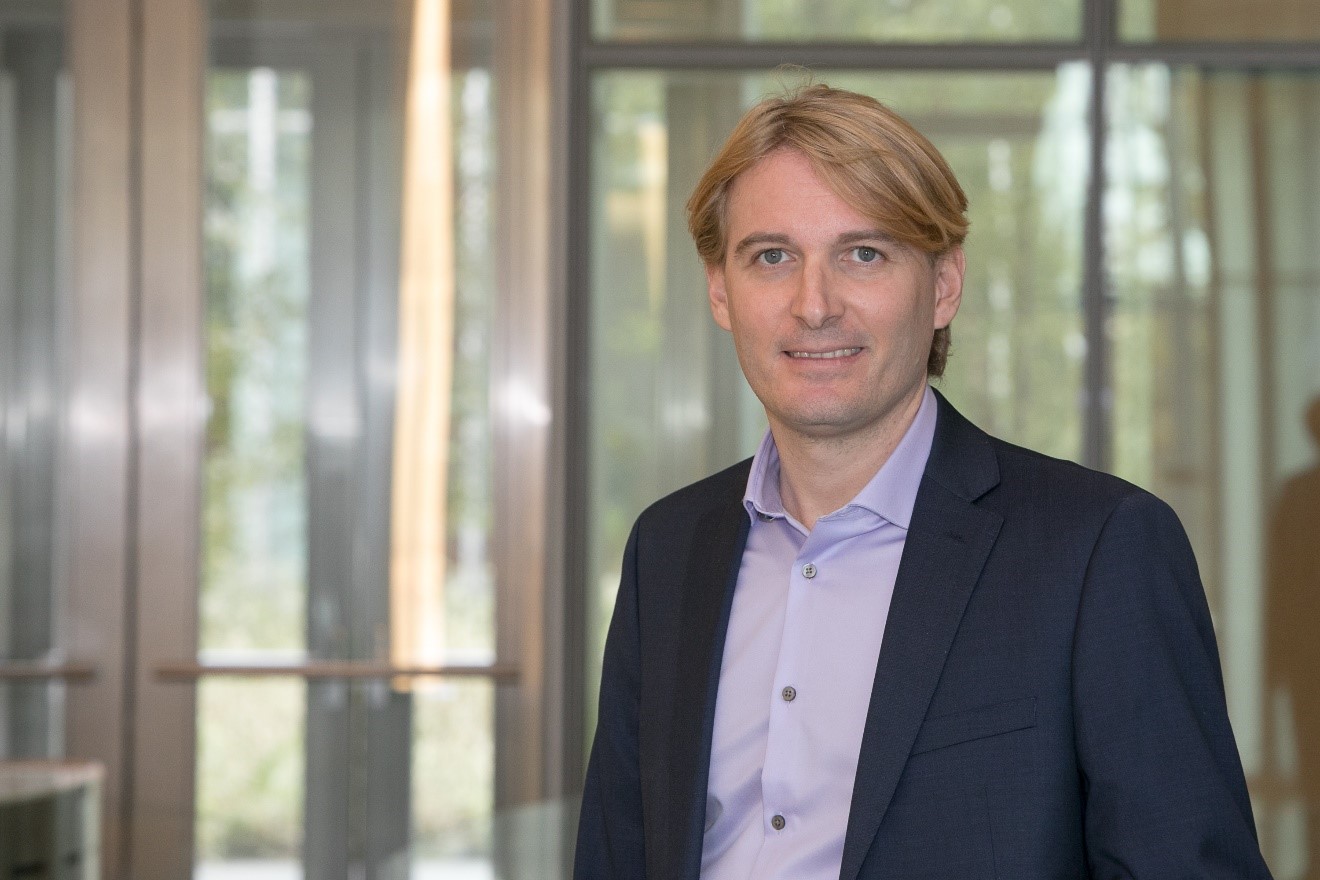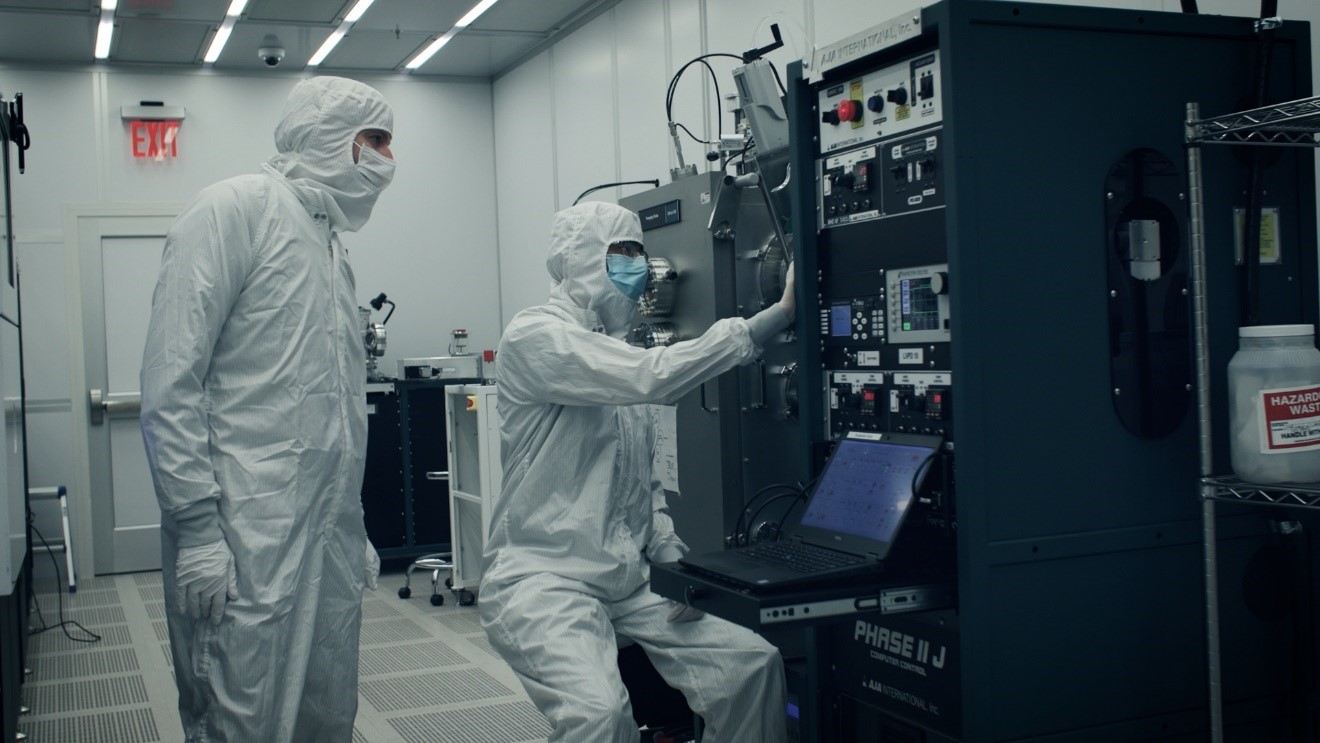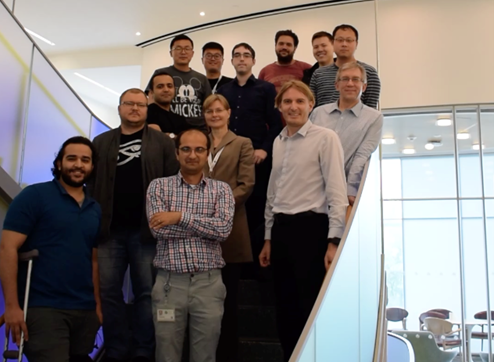This year’s Blavatnik National Awards for Young Scientists Laureate in Physical Sciences and Engineering creates materials that manipulate waves in ways that were once thought impossible.
 Andrea Alù, Ph.D., City University of New York
Andrea Alù, Ph.D., City University of New York
Andrea Alù isn’t satisfied with how light waves and sound travel through objects and space. So he engineers new materials that appear to violate some well-established laws of physics. Enhanced wireless communication and computing technologies, improved bio-medical sensors, and invisibility cloaks are just some of the achievements of his lab.
“We create our own materials, engineered at the nanoscale,” explained Alù, who is Director of the Photonics Initiative at the Advanced Science Research Center at the City University of New York (CUNY). “We call them metamaterials, which push technologies forward, to realize optical properties, electromagnetic properties, or acoustic properties that go well beyond what nature and natural materials offer us.”
This work has led to many honors, and this year the Blavatnik National Awards for Young Scientists is recognizing Alù as its 2021 Laureate in Physical Sciences and Engineering.
In a recent interview with the New York Academy of Sciences, Alù explained a core behavior of light that is at the heart of his research:
One of the most basic phenomena in optics is light refraction, which describes the change in direction of propagation of an optical beam as it enters a material. We can understand this as the collective excitation of molecules and charges in the material, produced by light. In metamaterials, we make up our own molecules—we call them metamolecules.
Metamaterials feature many different geometries of at the nanoscale. Some can be engineered to interact with light in such a way that they may actually make objects disappear from sight. It is a phenomenon called “cloaking.” Alù continued:
This engineering at the nanoscale allows us to change the ways in which light refracts as it enters a metamaterial. By bending light in unusual ways, we can actually realize highly unusual optical phenomena, like enhancing or suppressing the reflections and scattering of light from an interface, making a small object appear much larger, or conversely, even disappear altogether, by hiding it from the impinging electromagnetic waves.
“Invisibility” has long been part of our popular imagination and science fiction, from H.G. Wells’ novels to Star Trek and Harry Potter. A pioneering theoretical step dates back to 1968, when a Russian physicist wondered if a phenomenon called “negative refraction” might be possible. But no materials featuring this property were known, and some scientists believed none would be found because negative refraction might violate widely-used equations describing the propagation of light. Thirty years later, in 2000, a team of scientists was able to demonstrate negative refraction in a metamaterial for a certain frequency of electromagnetic radiation. A few years later, experiments demonstrated actual metamaterial cloaking, and Scientific American proclaimed: “Invisibility Cloak Sees Light of Day.”
Alù started working on metamaterials in 2002, when he spent a year at the University of Pennsylvania as a visiting student. He has conducted pioneering research in the field ever since. A major achievement came in 2013. Alù, then at the University of Texas at Austin, and his collaborators, demonstrated the cloaking of a three-dimensional object using radio waves. The work showed that antennas, like the ones in our cell phones, could be made transparent to radio-waves, a finding of potential commercial and military value, as it eliminates interference between closely-spaced transmitters.

Alù’s interest in light and other electromagnetic waves began as a child in Italy when he was fascinated by how our radios and television sets receive broadcast information without wiring. His interest intensified in high school when he realized a “beautiful common mathematical framework” describes the propagation of light, radio signals, and sound, and the fact that no information can be transmitted faster than the speed of light.
Alù went on to study at the University of Roma Tre, where he earned a Ph.D. in electronic engineering. After a postdoctoral fellowship at the University of Pennsylvania, he joined the faculty of UT Austin in 2009, and moved to CUNY in 2018.

Nanomaterials being developed in Alù’s lab may also improve near-field microscopy for better biomedical imaging, and lead to optical computers, enabling faster and more efficient PCs that use light instead of electric signals.
Yet another area of intense research for Alù and his research team has been “breaking reciprocity,” with implications for improved transmission of sound as well as radio waves and light. “Light, sound, and radio waves, typically travel with symmetry between two points in space,” Alù explained. “If you hear me, I can hear you back. If you can see me, typically you can see me back. This property is rooted into the time reversal symmetry of the wave equations.”
Alù said his lab’s work in breaking this symmetry with metamaterials is a good illustration of the connection between basic and applied research:
Interestingly, making materials that transmit waves one way and not the other started as a curiosity, but it has rapidly become extremely useful, from improving data rates with which our cell phones or WiFi technologies operate to protecting sensitive lasers from reflections. This has been a very exciting quest, from basic research to applications.
Alù began his research and teaching career in the U.S. only after he earned his Ph.D. in Italy and, as a result, he found he initially had a smaller professional network than many of his peers. But Alù says the U.S. was very welcoming, and he quickly caught up:
I come from Italy and I did all my undergraduate and graduate studies there. So, coming to the U.S. first as a postdoc, then as a faculty member, I didn't have a large support network around me, I didn’t initially have a lot of connections…. But at the same time, I have to say, the United States offers tremendous opportunities, in particular to young scientists, to help build up their research groups, and to thrive.
Alù continued: “The U.S. is an amazing country in welcoming young people, new talent, and supporting them in the broadest possible terms… An excellent example of this is the Blavatnik National Awards program, and the broad range of scientists it recognizes.”
 Alù lab at the ASRC at the CUNY Graduate Center
Alù lab at the ASRC at the CUNY Graduate Center
Alù stepped into the field of metamaterials at a time of tremendous scientific excitement. He and his research team have contributed significantly, to both theoretical knowledge and applications. This is how Alù reflects on of his achievements, and those of his peers: “In our ongoing pursuit of finding new ways to manipulate light in extreme ways with engineered materials, we have been showing how, by thinking out-of-the-box, we can overcome many current limitations of science and technology.”